Workplaces that Work
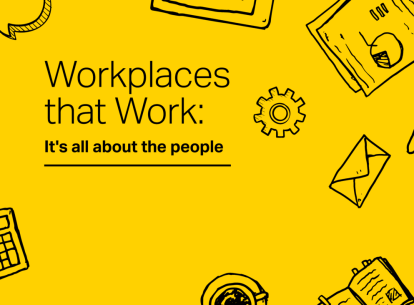
We talk a lot about workplace design and culture. There’s no shortage of ideas on how to create the most collaborative, engaging, or innovative workplace. The reality, though, is there isn’t a single prescription on how to design an exceptional workplace—no magic solution on how to create a workplace that successfully reflects the spirit and direction of the people that occupy it.
Rather, during a Think Tank discussion hosted in partnership between Metropolis and Corgan, we explored what makes workplaces work for its employees and their vision. Lindsay Wilson, President at Corgan joined by Terri Von Lehmden, Vice President of Human Resources for Toyota Motor North America; Lisa D. Lewis, Vice President of People and Culture at CPS Energy; Jason McCann, CEO and Founder of Varidesk explored the process and elements at various stages of capturing the energy and culture of a workplace and what it means to keep people at the center of design.
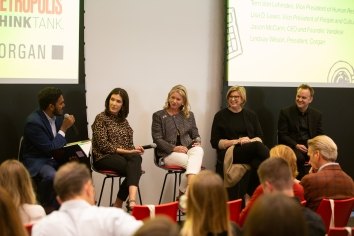
Here’s what we learned:
Space shapes culture, and culture shapes space
“We cannot make a culture, we can only shape it.” – Lisa D. Lewis, CPS Energy
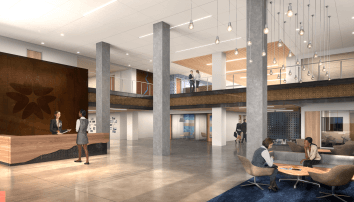
You can feel the energy of a space. As soon you step into a workplace, it’s palpable—the variety of buzzing conversation and quiet focused offices. The energy in great workplaces is often born out of core values, the collective mission, and corporate brand identity – it’s intentional, not arbitrary or left to chance. These are deliberate decisions based on a well-articulated understanding of both the current employee culture and where it’s headed. An exceptional workplace depends on getting that right and dialed in.
These things take time and, when done best, begin well before a project and sometimes years in advance. Much like human resources can shape a culture, workplace design can support a culture and organizational initiatives. Design brings these messages to life but cannot create culture either. For instance, open workplaces don’t automatically create collaboration, but demonstrate an organization’s intrinsic values of trust and transparency.
Projects move quickly but giving little time or attention to understanding the underpinnings of current and future culture can be detrimental. Compressed timelines often leave little room for developing a deep understanding of employee experience and opportunities for improvement. Let’s face it, a single perfunctory meeting with employees won’t do the trick. “Culture is not just the values on the website. As designers, we want to know what makes people choose to work there and stay,” said Lindsay Wilson. There is no single solution, either. A successful workplace that supports the complex cultures and direction of companies relies on variety—providing a strong mix of spaces, postures, finishes, and functions accompanied with a plan for change management to educate and empower users through the transition.
Having HR at the table changes the conversation about workspace design
“HR had to have a seat at the table in the design of our space. People are our most important asset, we had to include them in the process” – Terri Von Lehmden, Toyota Motor North America
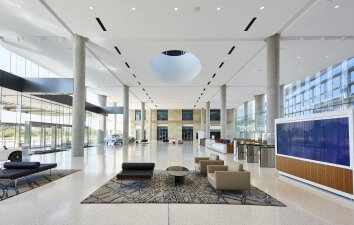
For so long, few have thought to include the “People” people in the early decisions of workplace design. Human Resources knows the people. At the helm of culture and people, HR offers key insights that change the dynamic of the conversation. At Corgan we are finding it’s becoming more and more common that the HR leader is a primary project leader. Policy and place need to work together. The best workplaces keep the focus on the people—layering place and technology in ways that meet them where they are, understanding their successes and challenges, supporting not only their work but also their physical and mental wellbeing, and ultimately, approaching space as a function for the people. It responds to the guiding principle that when your employees are operating at their best, it’s good for the entire organization.
What does that mean practically? Focus groups exploring what employees want to see in their space and their priorities at all levels across the organization offer opportunities to listen and solicit feedback on everything from carpet selection to conference room use. While big data provides powerful insights in understanding building efficiencies, they only tell one side of the story. Real conversations and leader-led forums give a look into how people feel in a space and how they experience it. These conversations are critical to hearing what people need from their work environment to feel their best and what they are trying to accomplish.
Looking at every avenue possible to get feedback, Toyota Motor North America turned to a social media strategy originally intended as a recruitment tactic. The @lifeattoyota channel organically serves as an engagement tool while stitching together stories and themes on what matters most to their staff based on messages, comments, likes, and views to help understand the pulse of their team members and what connects them. During the transformation at CPS Energy, HR was a key translator in addressing common employee pain points, where “no way is this going to work” found its way to positive, functional solutions and change. As a partner in engaging their space with pilot programs and hands-on involvement, their employees were intimately involved in reconfiguring and informing their personal workspaces.
Where CFOs and facilities teams were the primary drivers of design, including HR in the process inserts and preserves the focus on people. The movement to include their voices at the table means design that brings people back into the building.
A good work environment continues to evolve over time
“If it doesn’t work, we’ll just change it.” —Jason McCann, Varidesk
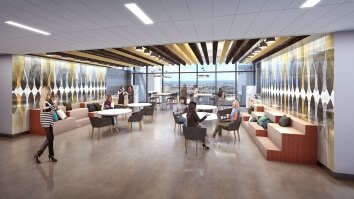
Think you’ve nailed your workplace? You’re probably wrong. Workplaces are living things that support and reflect changing, breathing organizational goals and cultures. From inception, they are always changing. Here’s how Lindsay Wilson puts it: “When you choose to undergo a transformation in your workplace, there are two things we know for sure. First, everyone won’t be happy on Day One. Second, there will be changes that need to be made over time. The process has to be an evolution because the nature of work is an evolution.”
And, according to Jason McCann, “the era of transparency and flexibility aren’t going anywhere…[and] the organizations that best embrace change are the ones that attract the people and places that also embrace change.” As an organization grows—adding employees, evolving to business changes and trends, and responding to market disruptors, businesses are constantly ebbing and flowing, stretching themselves to accommodate and adjust to an unpredictable and always changing future. They need workplaces that are just as agile and pliable as they are.
Varidesk’s fresh perspective challenges traditional design standards and sometimes formulaic best practices with a radical notion of flexibility. A DNA of flexibility and adaptability that gave birth to their first product, the organization comes to space as a service model with an expectation that the work environment be as immediately responsive and changeable as their sit to stand desk. A space that feels more like an ideation and experimentation lab, their offerings at Varispace place a premium on what people want and much more of what rapidly growing companies need over what the traditional model has been.
Our standards and best practices are always changing. As we understand more and more, for instance, about how to encourage a workplace that promotes health and wellbeing, workplaces need to be able to incorporate changes that can keep up with the demands of new findings and lifestyle shifts. A product of continuous learning and sharing ideas, their workplace demonstrates the collective impact of several elements and small, incremental changes that transform the culture of wellness for their employees.
Open to the moving things several times within a day, sometimes overhauling a space overnight, and certainly testing new ideas throughout the life of a space, Varispace more than invites, it encourages their clients to participate in their radical flexibility in short and long-term ways. What can’t be visualized on a piece of paper is instead tested, poked, and played with in real life.
While Varispace is a bold step in hyperflexiblity, functional office spaces of all types require a flexibility that can respond to the several needs, preferences, workstyles, and functions of their team—providing a variety of spaces for different personalities and tasks to succeed. The great debate on the open office and its vilification is most often a product of misplaced frustration from not having the right mix and variety of spaces. The open office only works as a component in a full palette of spaces that support a verity of work and personal preferences.
Today’s workplace is marked as much by transparency and flexibility as it is by customization and instant gratification. Terri Von Lehmden puts it this way, “We’re in this age of customization. Everyone wants something specific to them—instantaneous and turned around tomorrow. We’d love to figure out how to do that in a building because the more we do that, the more successful we will be.” She speaks to the constant pressure the workplace faces to be many things to many people while also changing to meet the demands of future functions, jobs, and needs.
Successful workplace design isn’t easy. “We need to create workplaces that are worthy of the people inside them,” said Lisa Lewis. Just as important as the design, we need look ahead to data and research to reinforce or challenge our understanding, trains the next generation of leaders, a way to regularly gather feedback and respond to changes over time in the organization’s culture, and manage what can sometimes be difficult change. According to Lewis, “It’s a compromise. We have to meet people where they are today, but design for flexibility to accommodate what we know the future workforce will need.”





